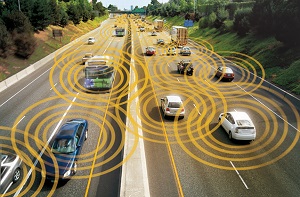More than two out of five cars will use vehicle-to-vehicle (V2V) technology by 2030, as manufacturers look to use dedicated short-range communications and 4G LTE technology to manage traffic more efficiently.
New research from Frost & Sullivan found that Daimler and Volvo are expected to lead the charge, with vehicle-to-infrastructure (V2I) systems already gaining traction in the Netherlands, Denmark, Austria, Germany, and France.
Researchers said cooperative technologies, that use the likes of wireless local area network or dedicated short-range communications, are helping to enable the products. In the longer term, global navigation satellite systems and infrared modes will used alongside the likes of 4G LTE to build a platform for effective communication.
Cooperative systems prove more effective than the likes of advanced driver assistance systems and telematics, particularly in real-time events such as accidents or road damage have happened, according to F&S.
Carmakers are planning to deploy a pan-European standard for cooperative intelligent transportation systems (CITS) by 2015.
Among the companies set to benefit from the move towards V2V are NEC Labs Europe and Kapsch TrafficCom.
F&S Automotive and Transportation Industry Analyst Neelam Barua commented: “With market-ready products for V2X communication already made available by Tier I suppliers, new products embedded with V2X technology launched by automotive OEMs and the strong backing extended by EU governments, the market for CITS is likely to witness considerable growth in the next two to three years. In fact, 15 OEMs and ten Tier I suppliers across Europe are expected to deploy V2X applications by 2015.”
Automotive & Transportation Team Leader Prana Tharthiharan Natarajan added: “Interestingly, crowd-sourced V2X information from the connected car space is also gaining traction. A number of telematics service providers are looking to enable V2X through tethered and embedded connectivity interfaces that allow vehicles to send and receive data that could serve as the nascent stage of V2X, in the absence of DSRC or WLAN. Letting vehicles interact with each other can reduce crashes involving multiple vehicles, whereas ensuring V2X interactivity with passive elements such as environment, pedestrians, bicyclists etc. is essential for the future. At present, the industry still depends on ADAS for such information.”
Read More:
JT launches smart car-tracking M2M device
Apple launches Siri-based connected car service



